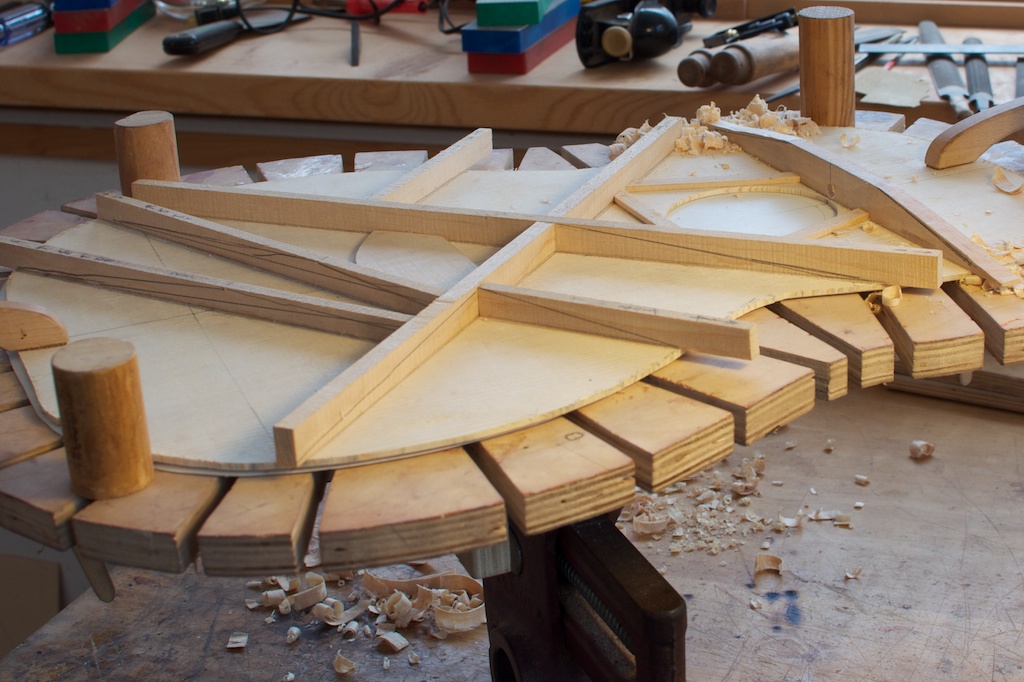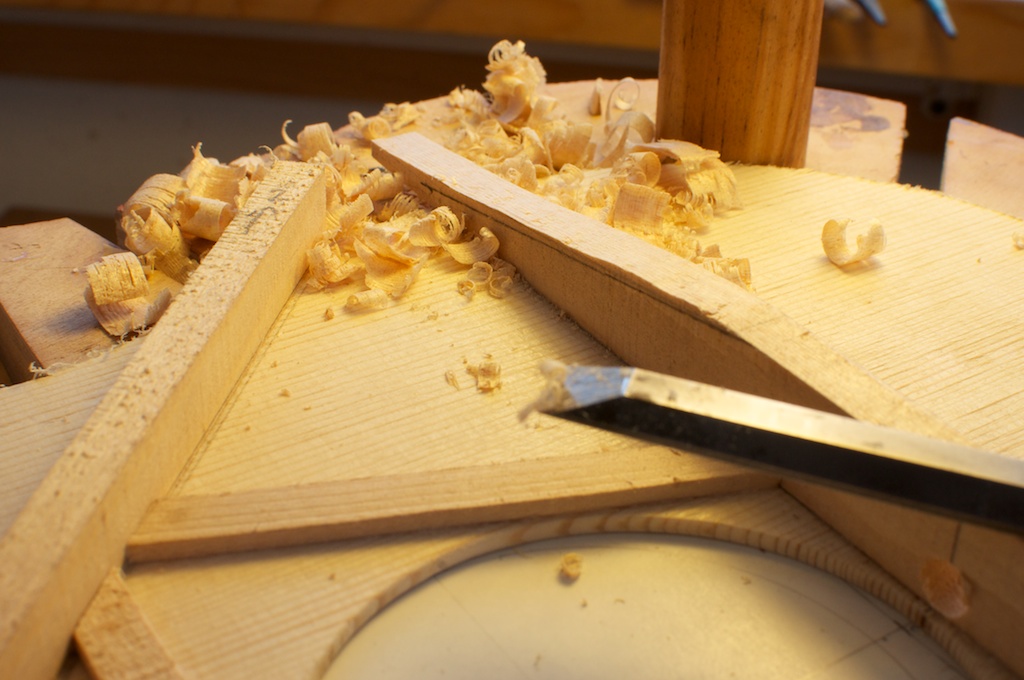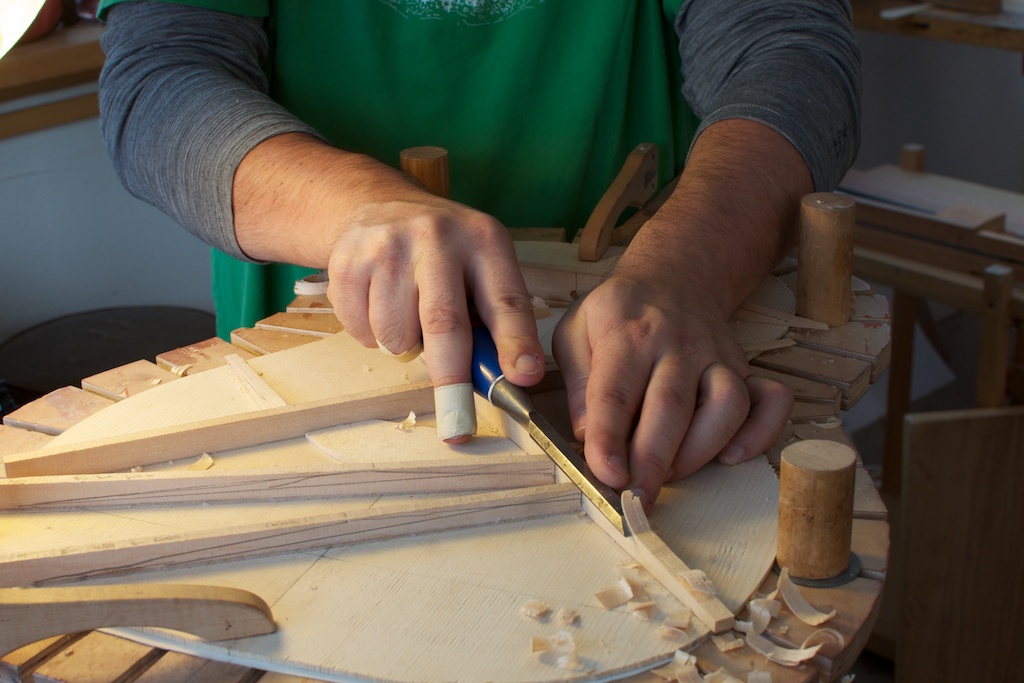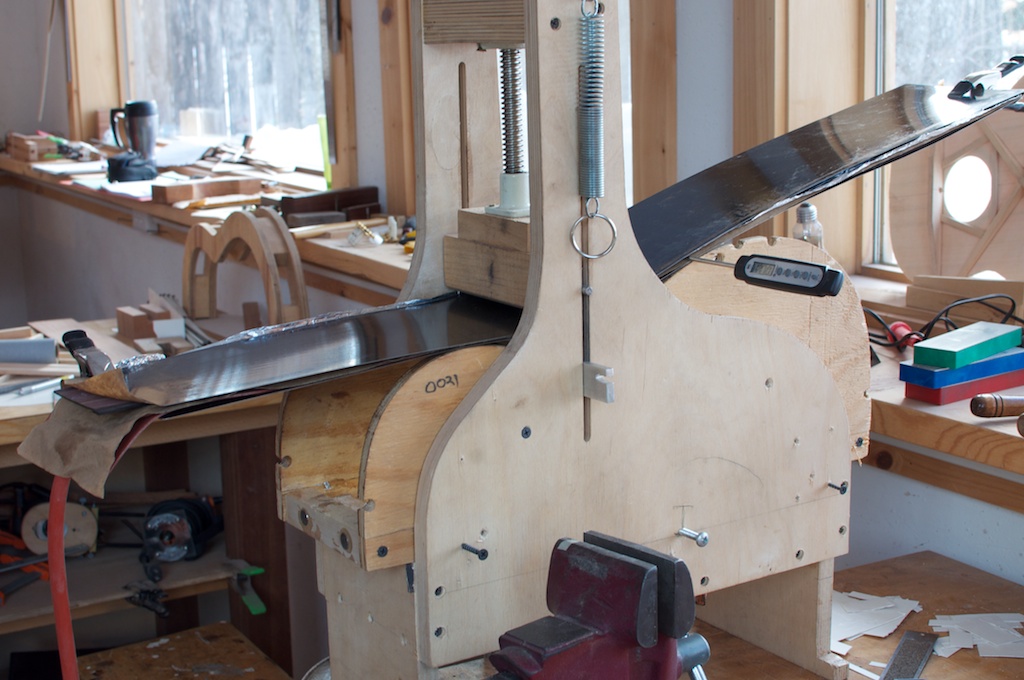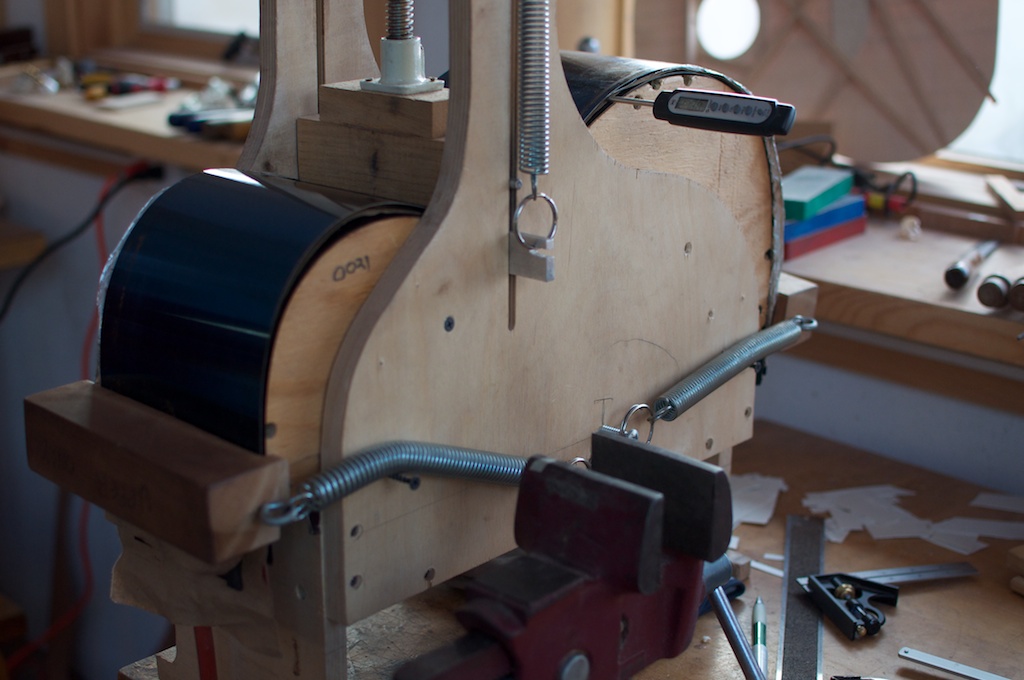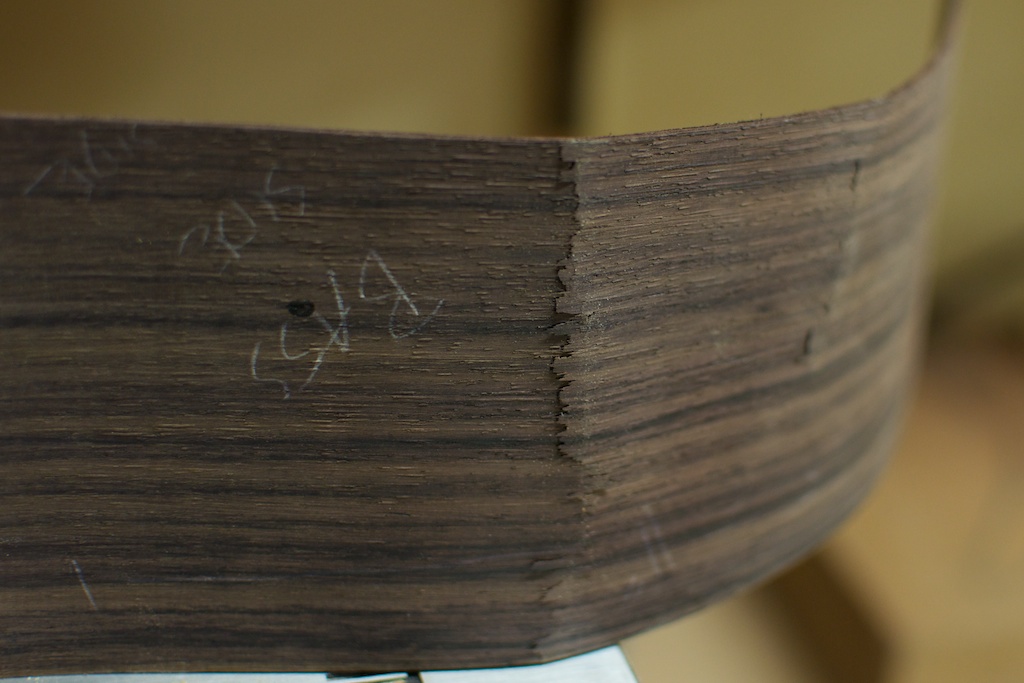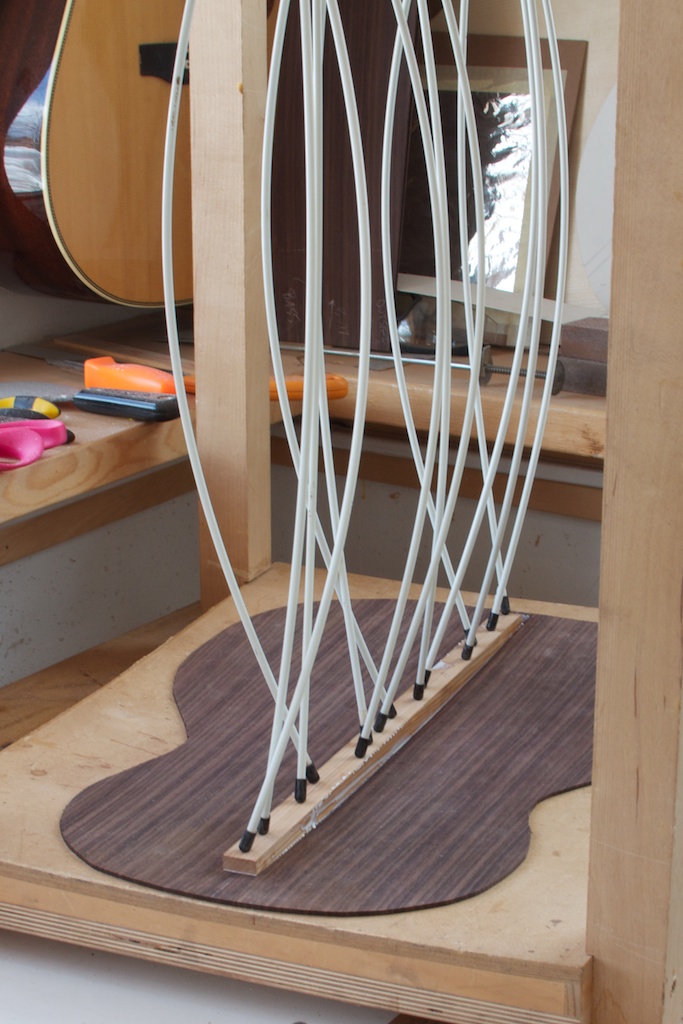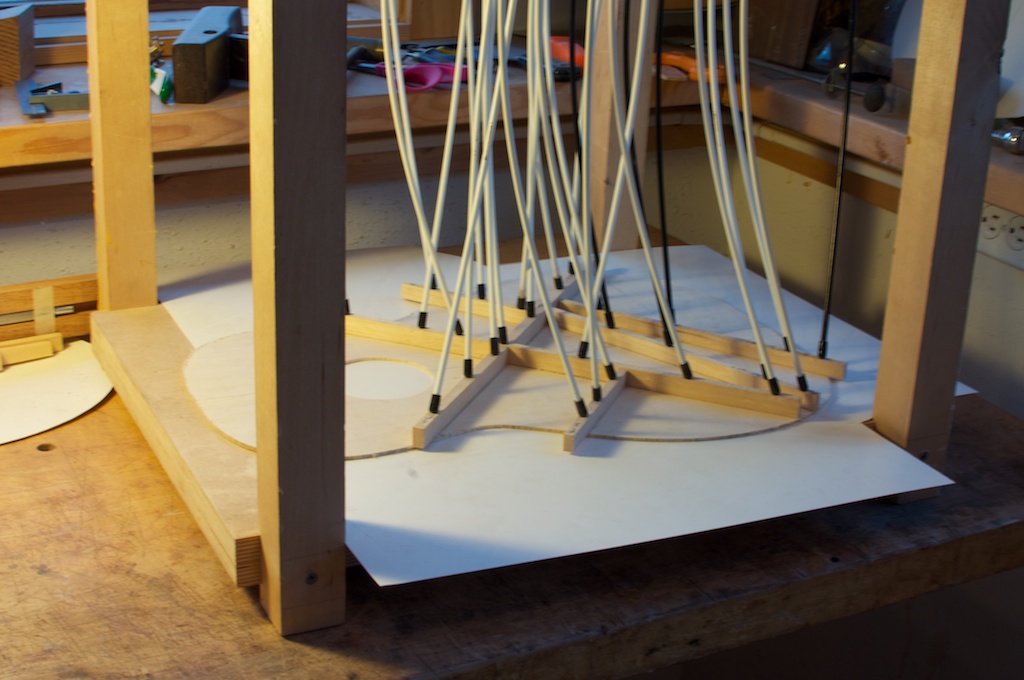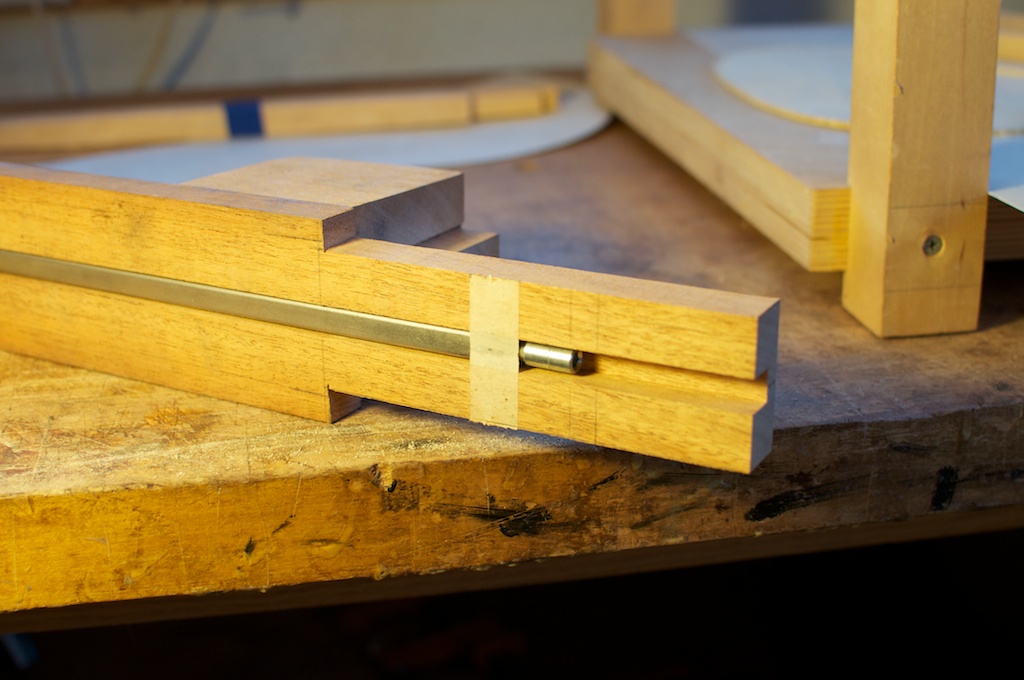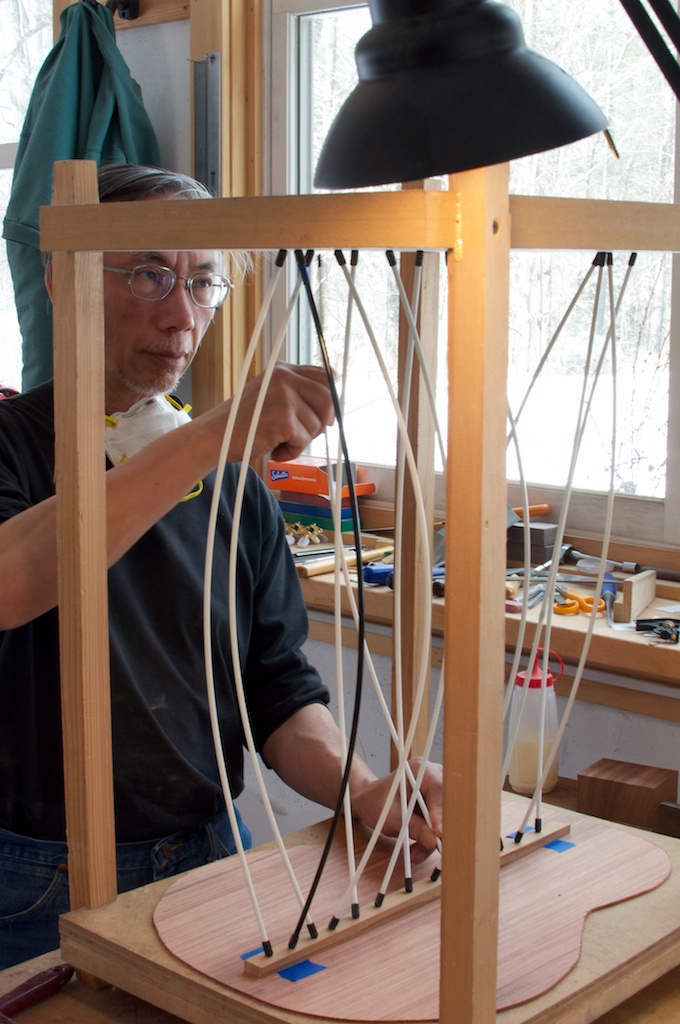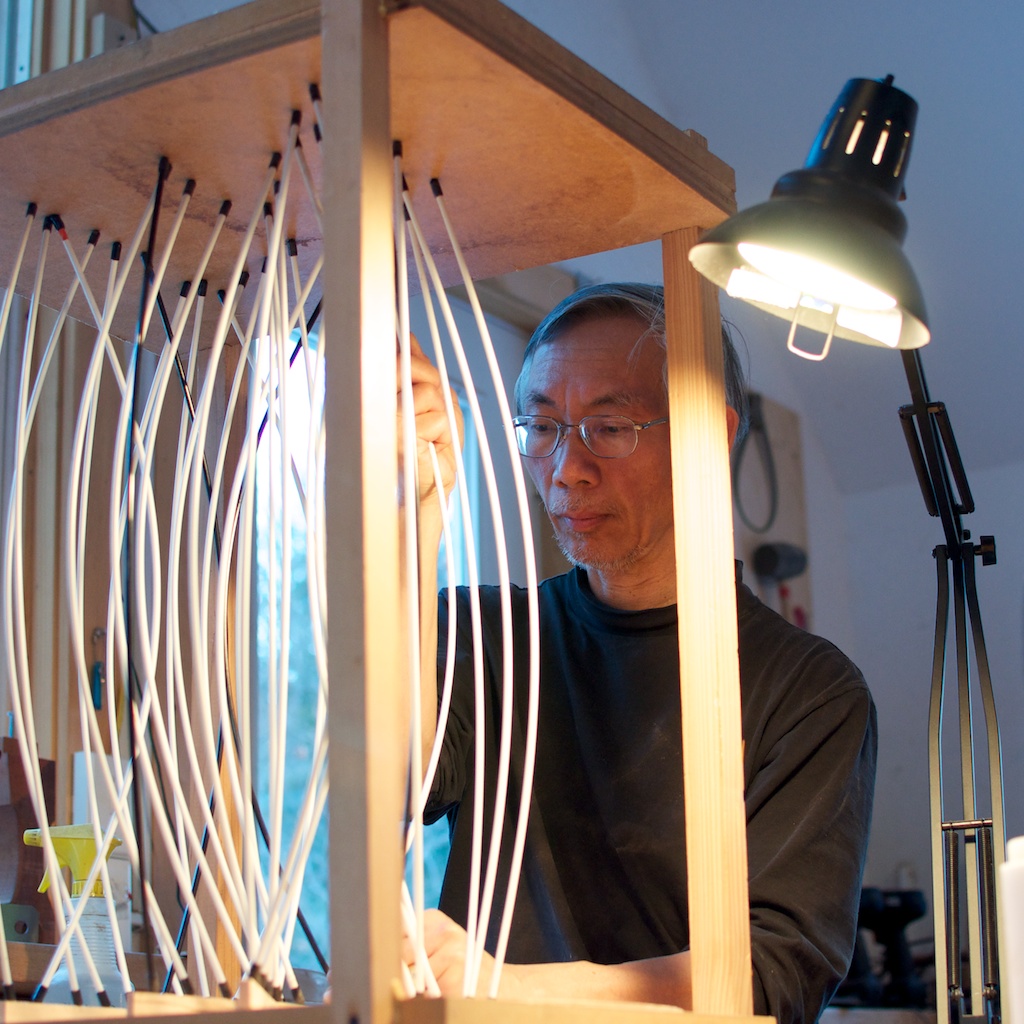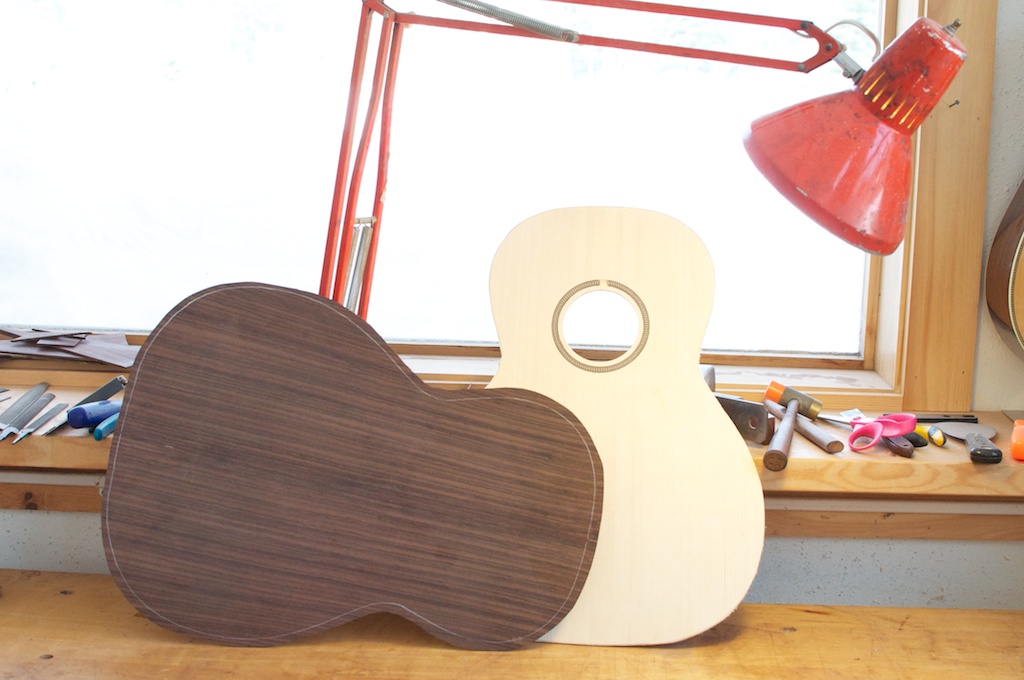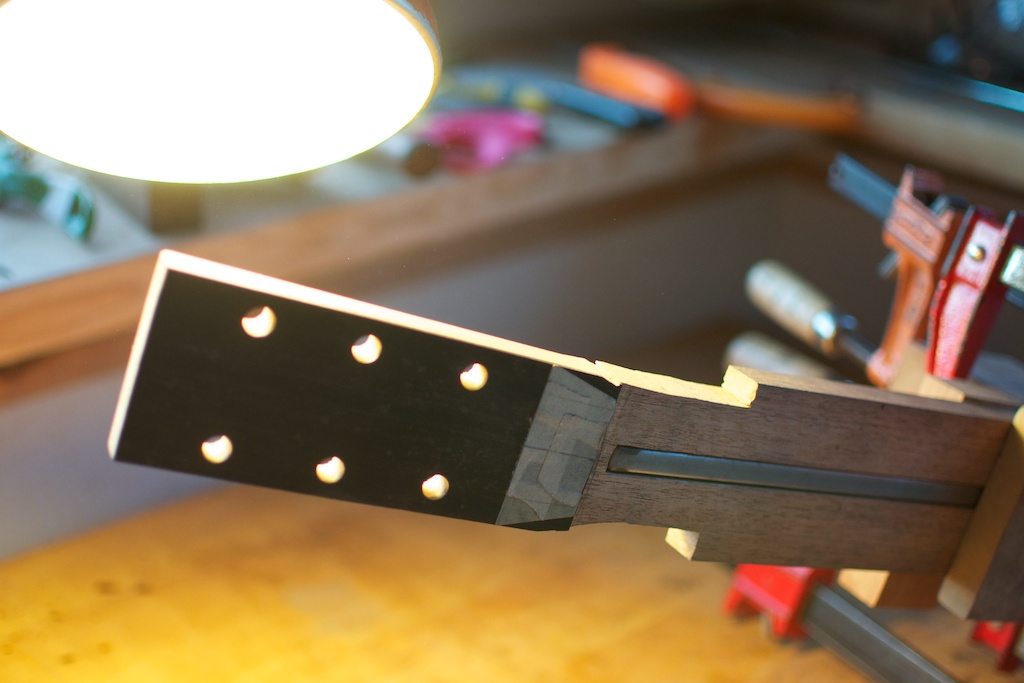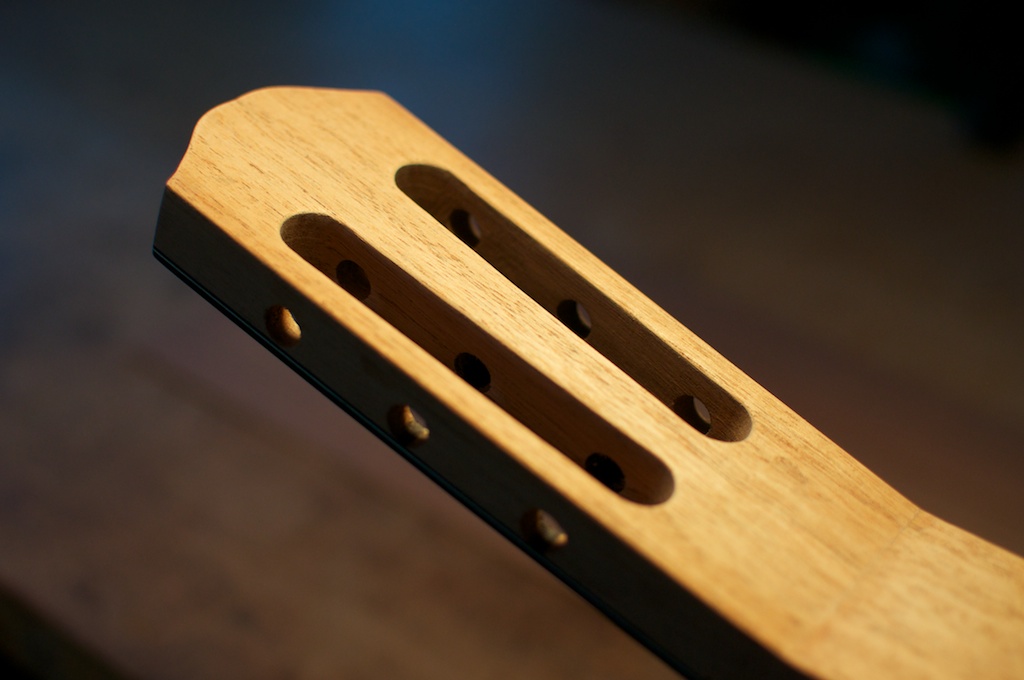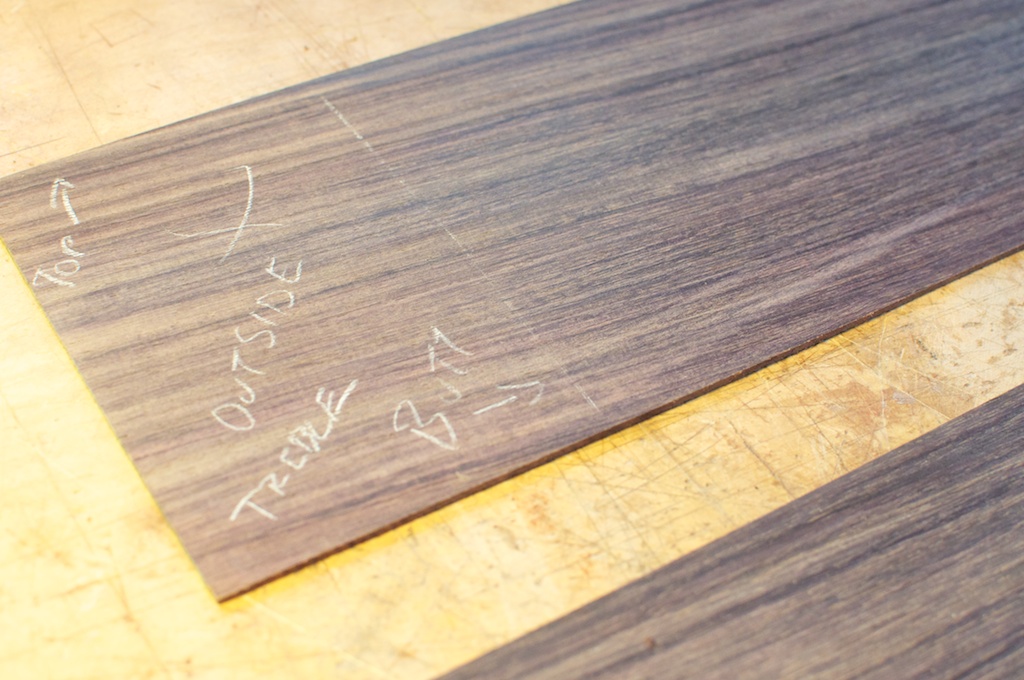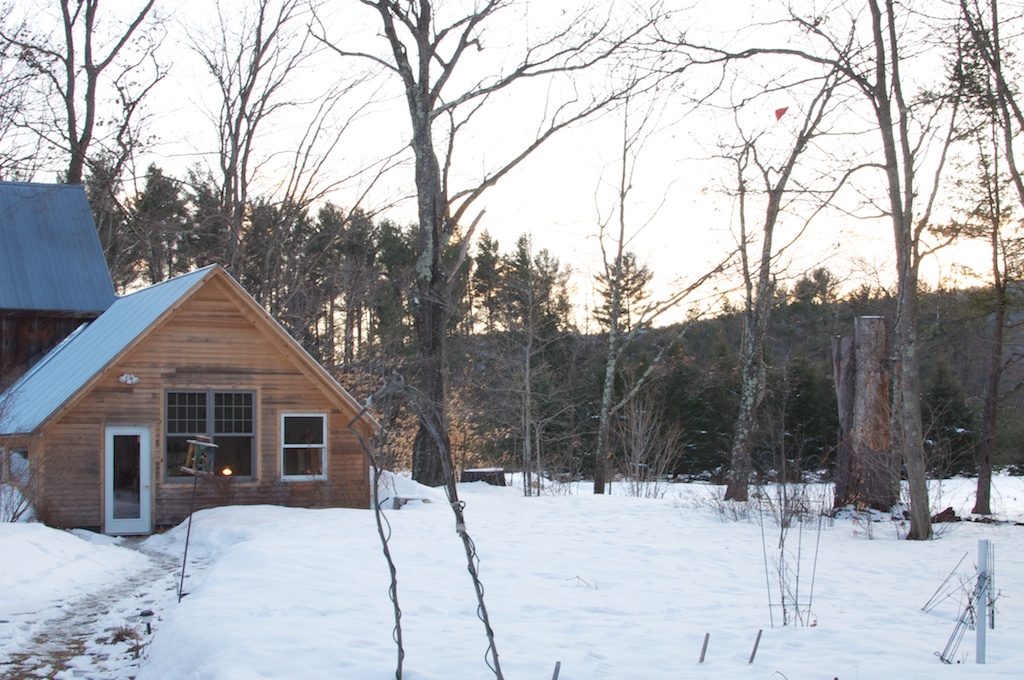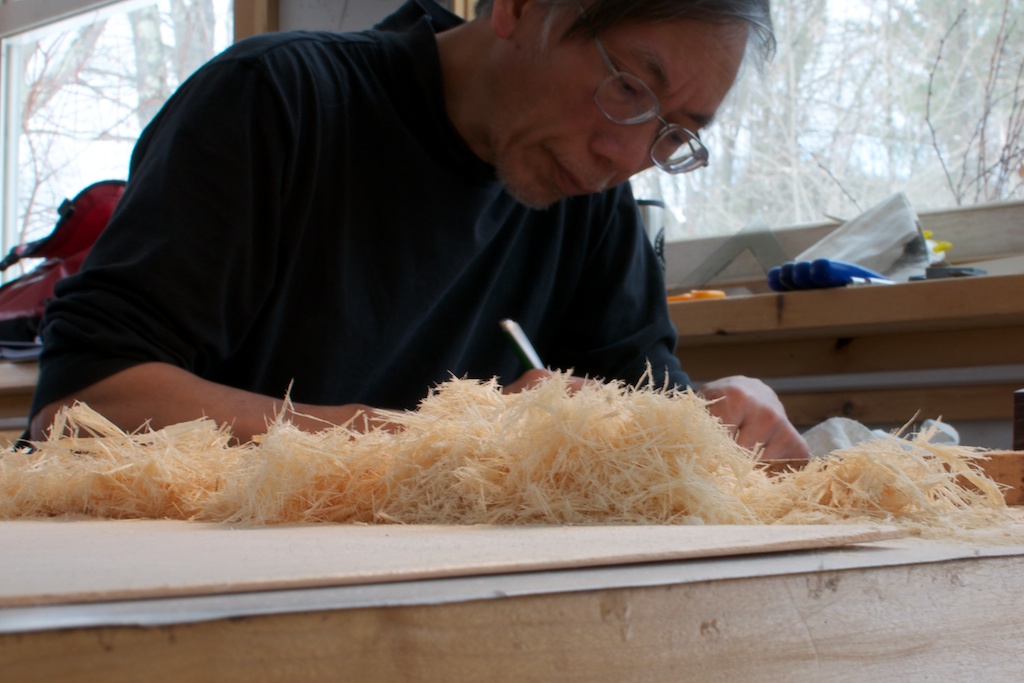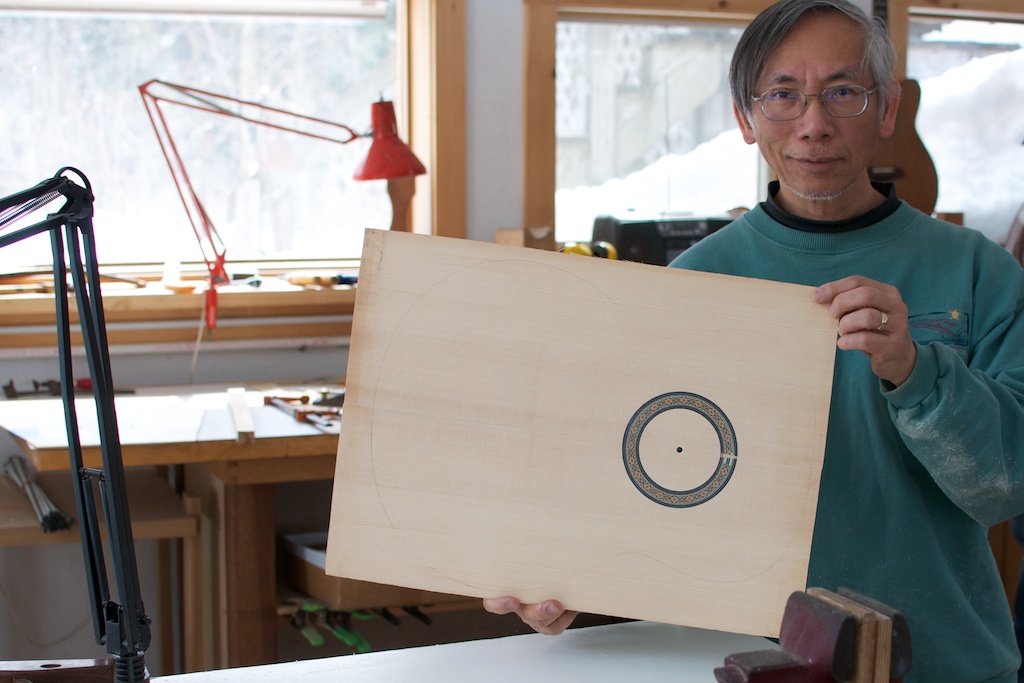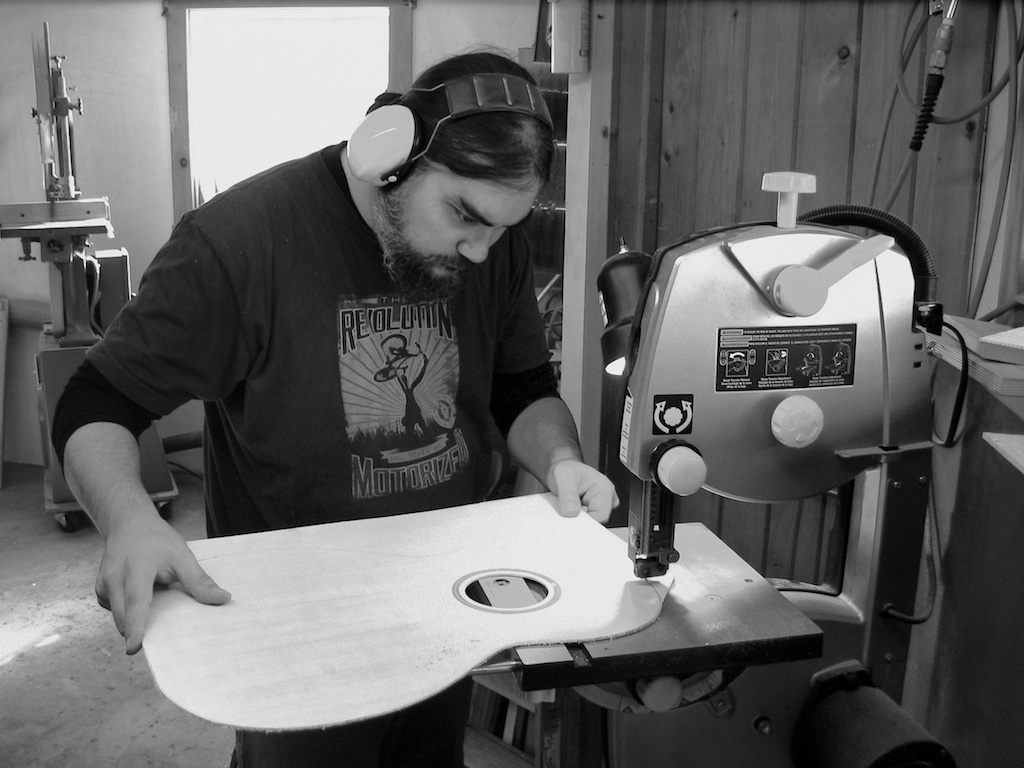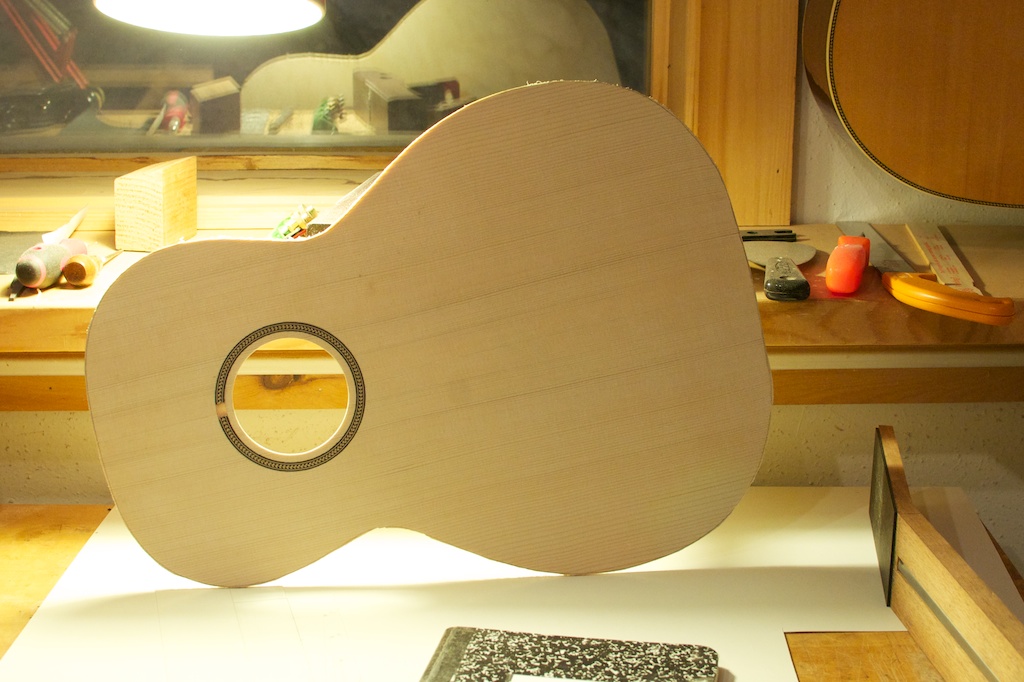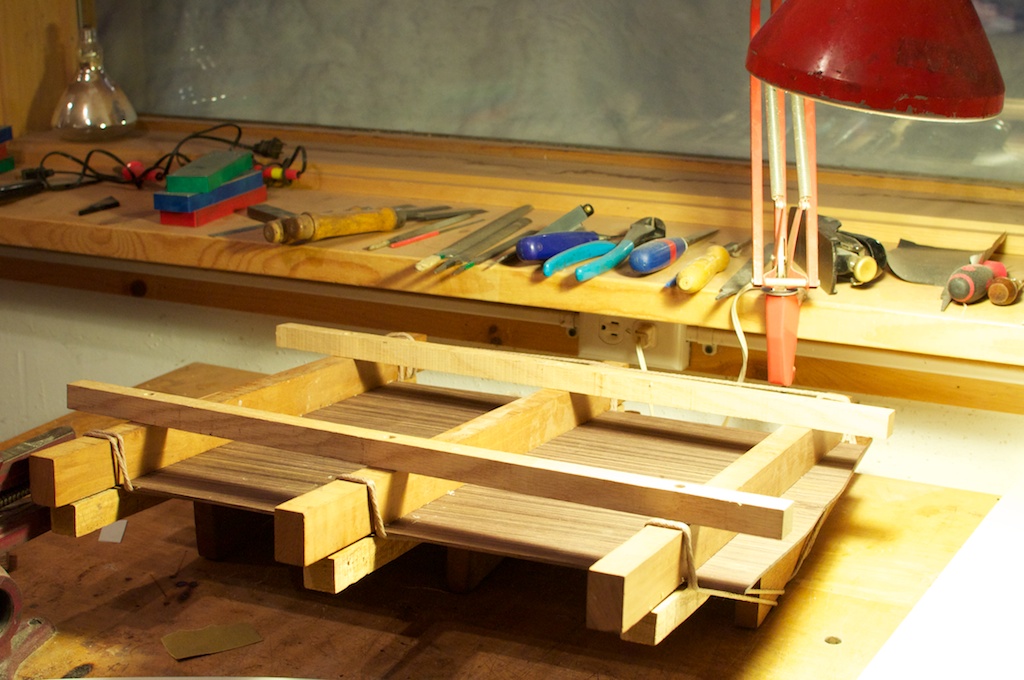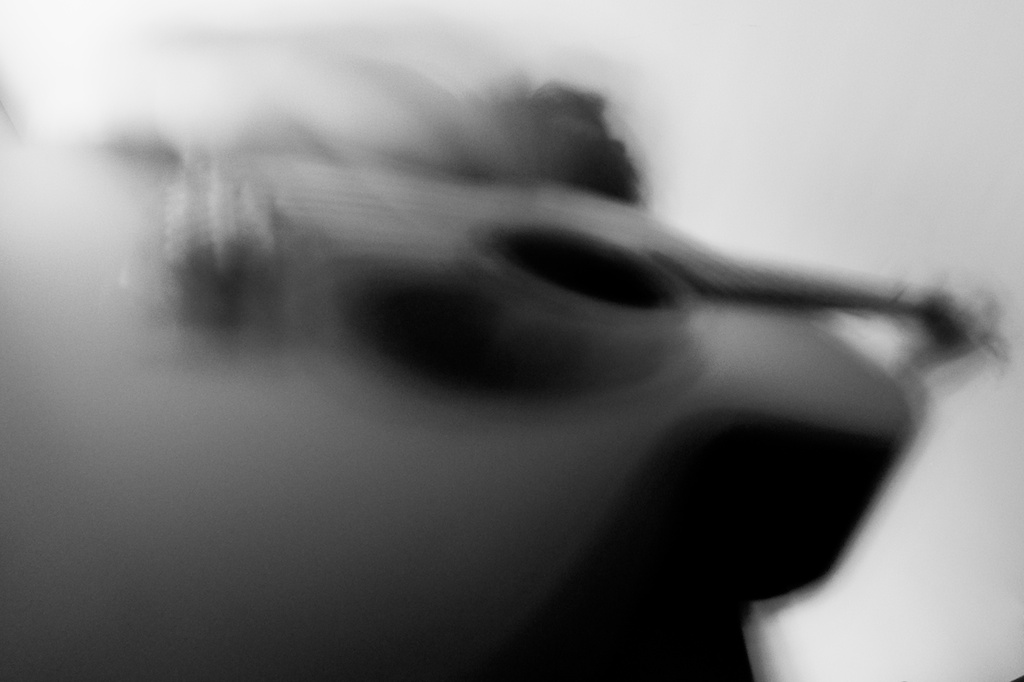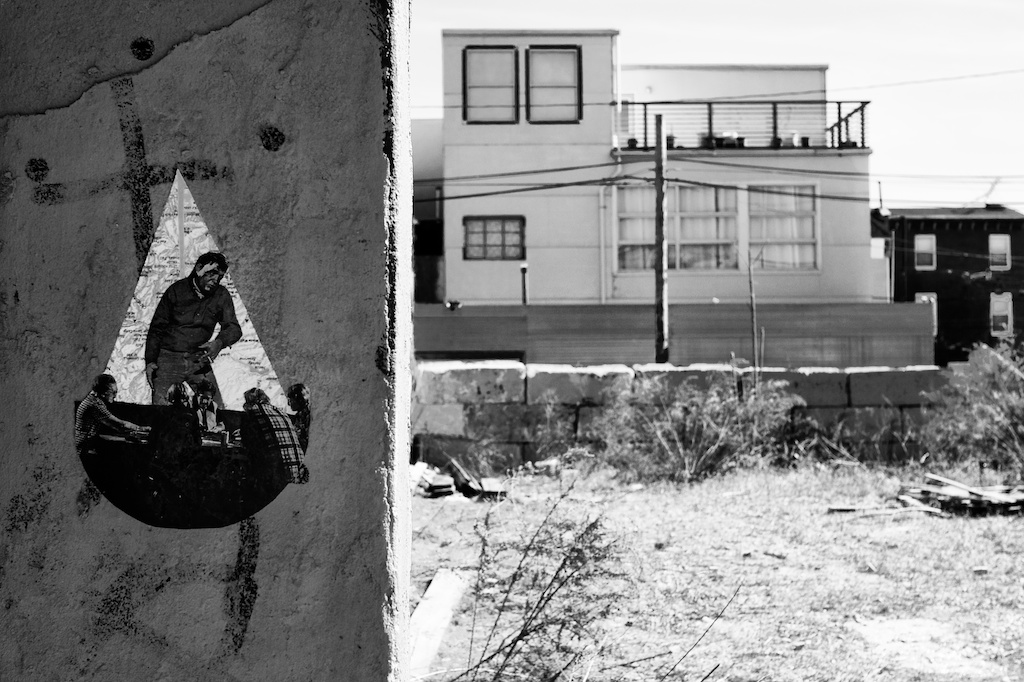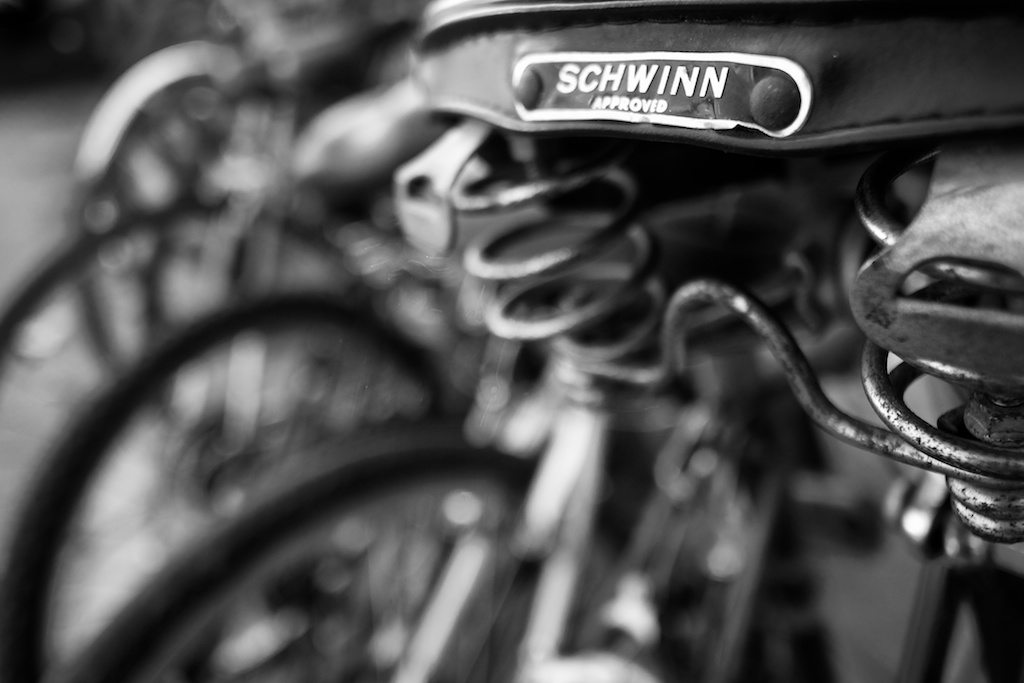Please pardon any forthcoming typos; I'll fix them later. It's late, we're only two days into the class, and I'm pooped. But it's more from the driving (three hours each way down to Albany to pick up my dad, and the accompanying four hours of sleep last night), not from the work (at least not yet). I am glad that my dad finally arrived!
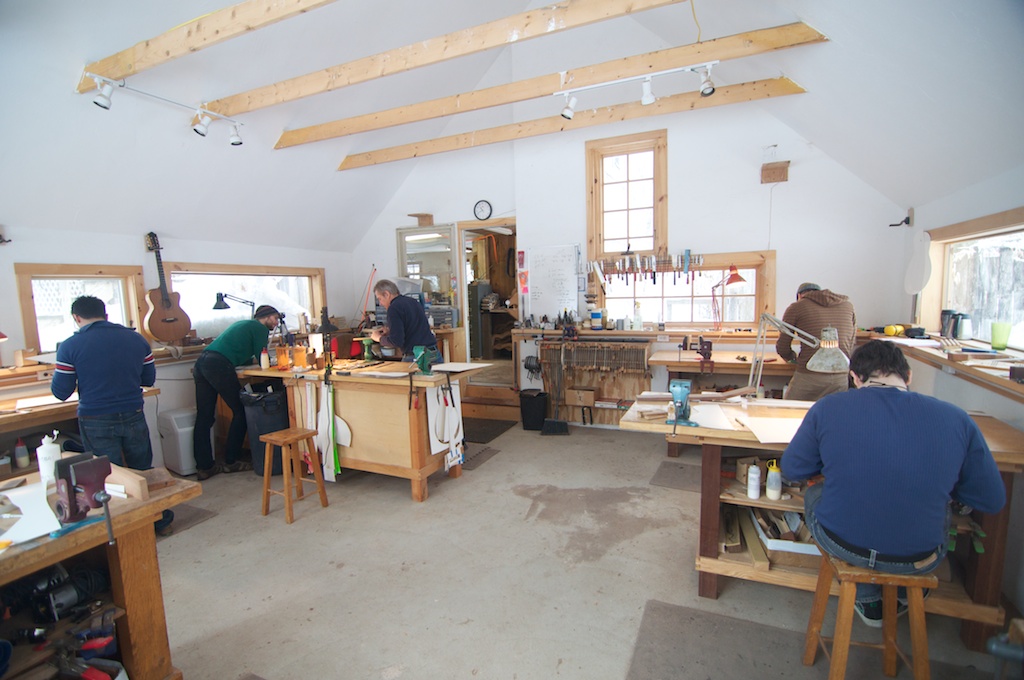 A view of the shop
A view of the shop
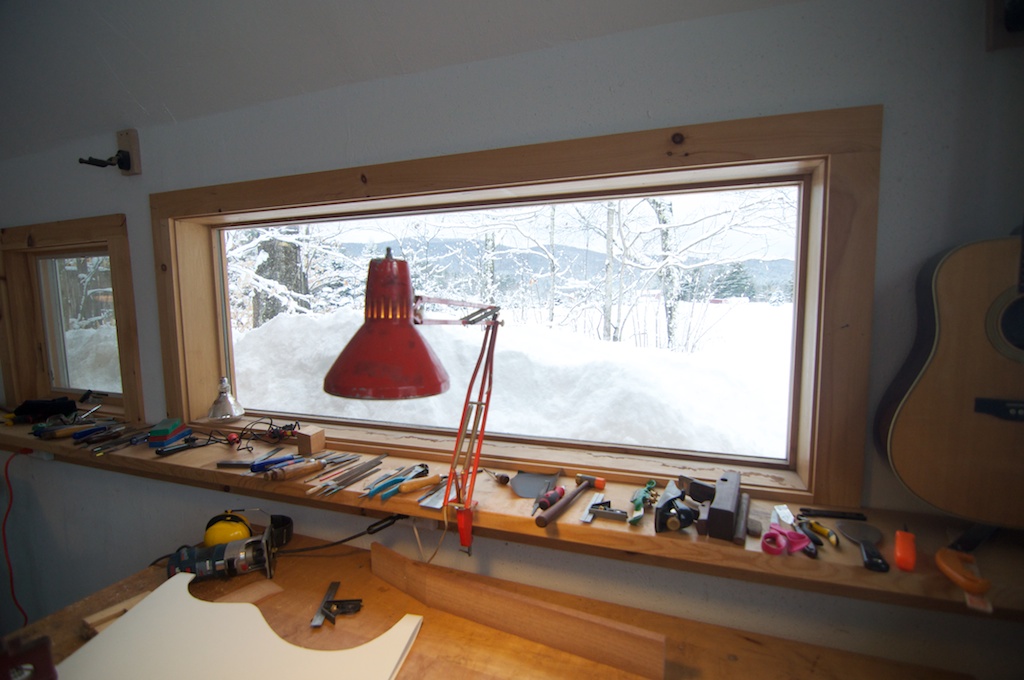 The view from my bench
The view from my bench
Day 1: I worked double-time today, because my dad wasn’t here yet (he got in last night), doing each operation twice so that he wouldn’t have to start from scratch and catch up when he got here. Instead, he’ll have a partially build guitar waiting for him (approximately 1/18th of the way done), along with a few inches of fresh new snow that blew in today.
The two main tasks for today were joining the two halves of the top (from bookmatched, quarter-sawn sitka spruce) into one “guitar size” piece for the top. We selected tops, and prepared the edges (that would become the center line for the top) on a joiner and then with a router to get them as smooth and straight as possible. Then they were glued together and held tight (overnight) on a contraption of bars that was tightened using rope and wedges driven between the bars and rope to increase the tension.
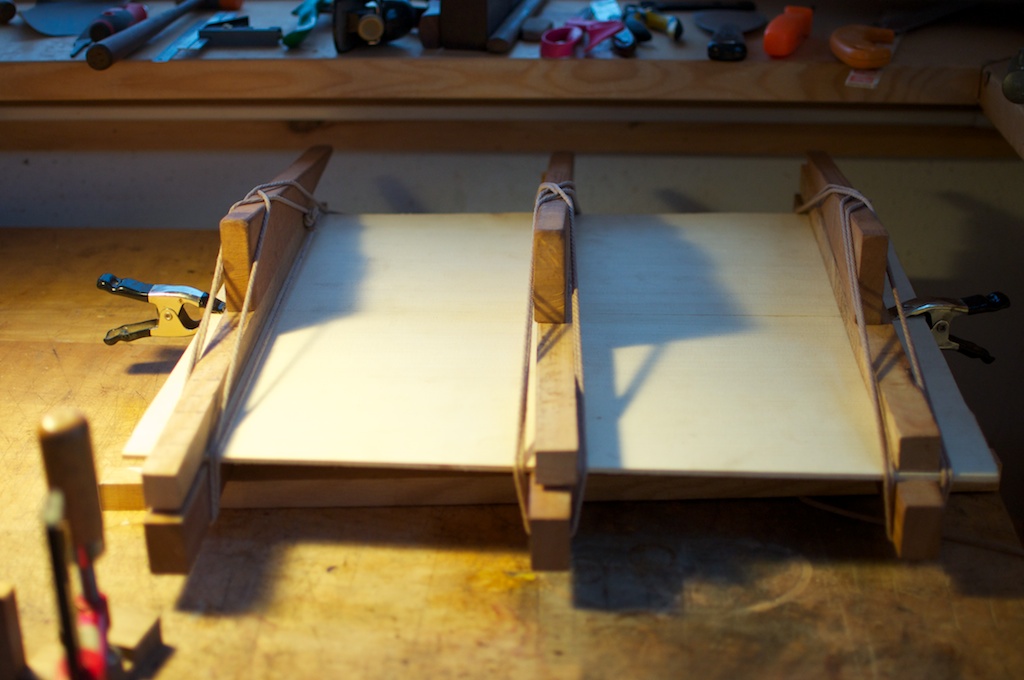
We also selected wood for our necks, either mahogany or walnut (being a traditionalist when it comes to guitar design, I chose mahogany), and created the rough shape of the neck. This was done by cutting off a piece of the neck blank at an angle, and then gluing that angled piece (which will become the headstock) to the end of the remaining neck to create the rough shape of a proper guitar neck.
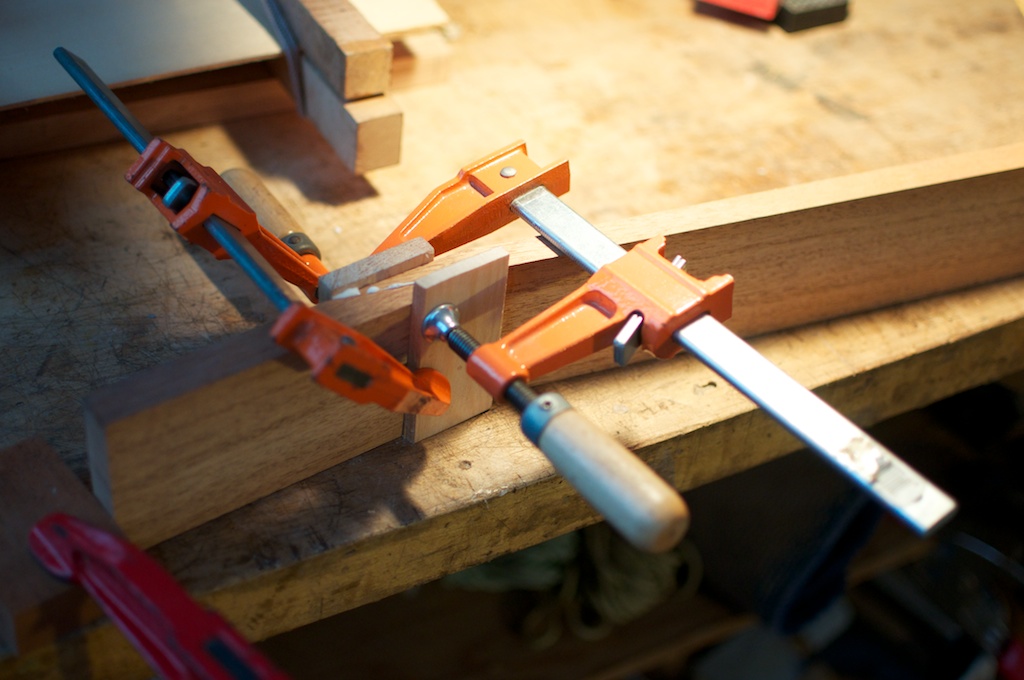
The above two tasks took most of the day. After class I drove down to Albany to pick my dad up at the airport; his flight arrived at midnight. We crashed there, and got up early to drive back to Vermont on Tuesday morning for class.
Day 2: Today’s tasks involved attaching the veneer to the headstock; I selected a simple piece of ebony with some subtle vertical striping (and didn’t do the more fancy black/white/black sandwich that the rest of the class did. Again, I’m a traditionalist, and if Martin doesn’t need to fancy up the headstock, I don’t either!). We also routed the channel for the truss rod.

We drew and cut our templates for our bodies, both in full and half-form. I had been planning on doing a Gibson-inspired guitar (like a L-00 or Nick Lucas), but templates for that shape weren’t available, so I chose a Martin 12-fret 00, with the general idea of doing a 00-21 ("double-O-21") style guitar.
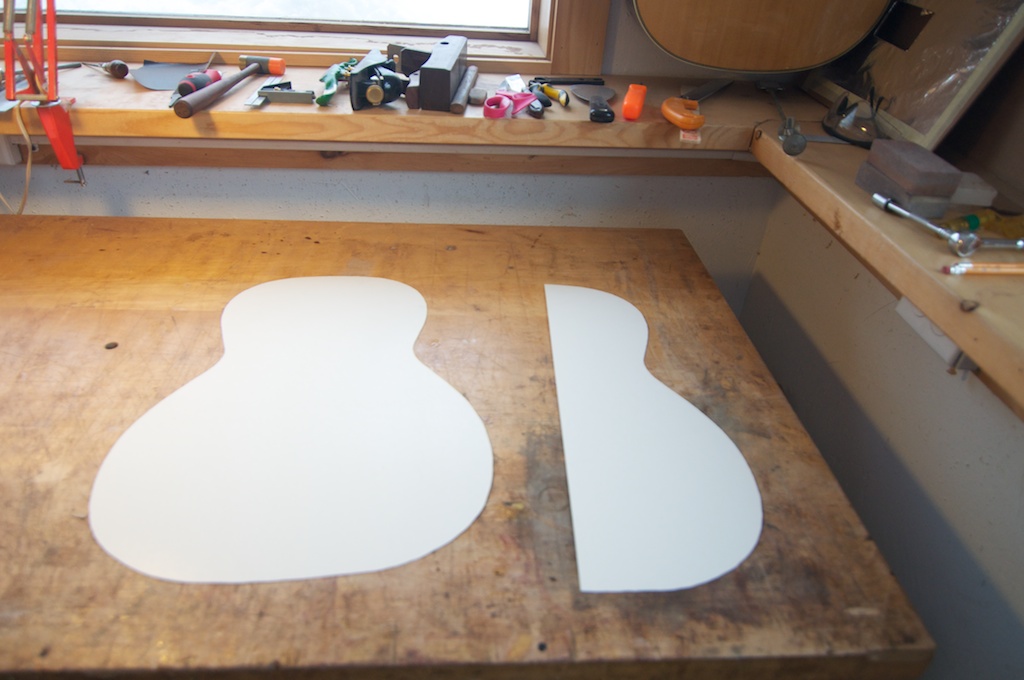
Finally, after spending a lot of time working our tops smooth, we installed the rosette (the little patterned ring around the soundhole) into the top, by routing a channel around where the soundhole will be and inlaying the pre-fab (from LMI) rosettes. I chose a simple single herringbone ring.
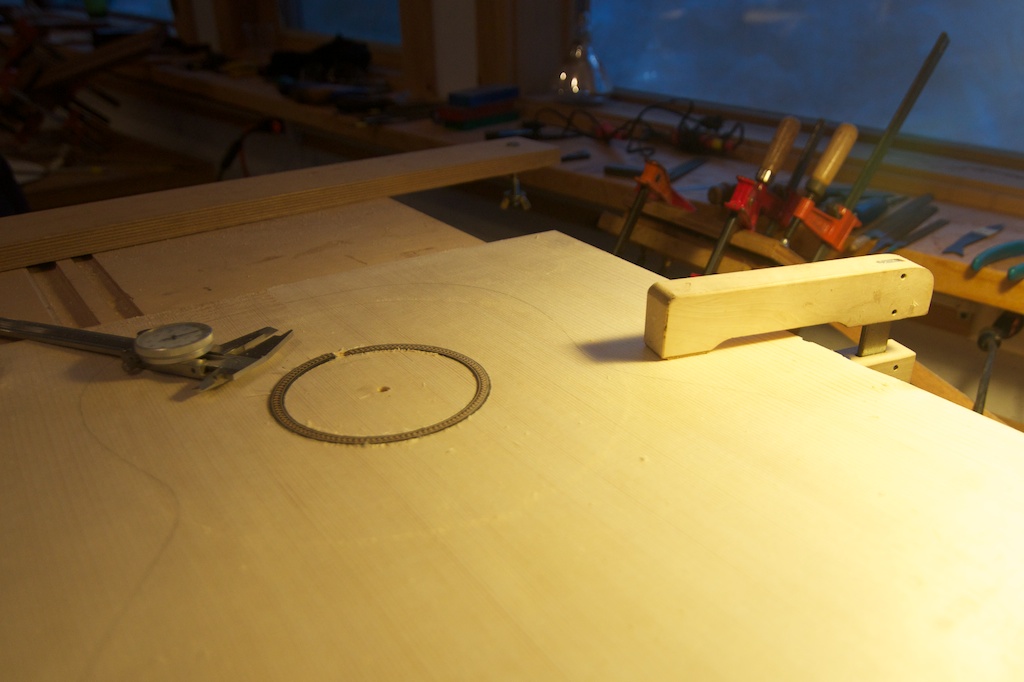
Today was a long, but good day. Up at 5am, drove from Albany to Post Mills, and was in the shop from 9:30am 'til 8:30pm, with a hour for lunch and an hour for dinner. Looking forward to getting a full eight hours of sleep tonight!
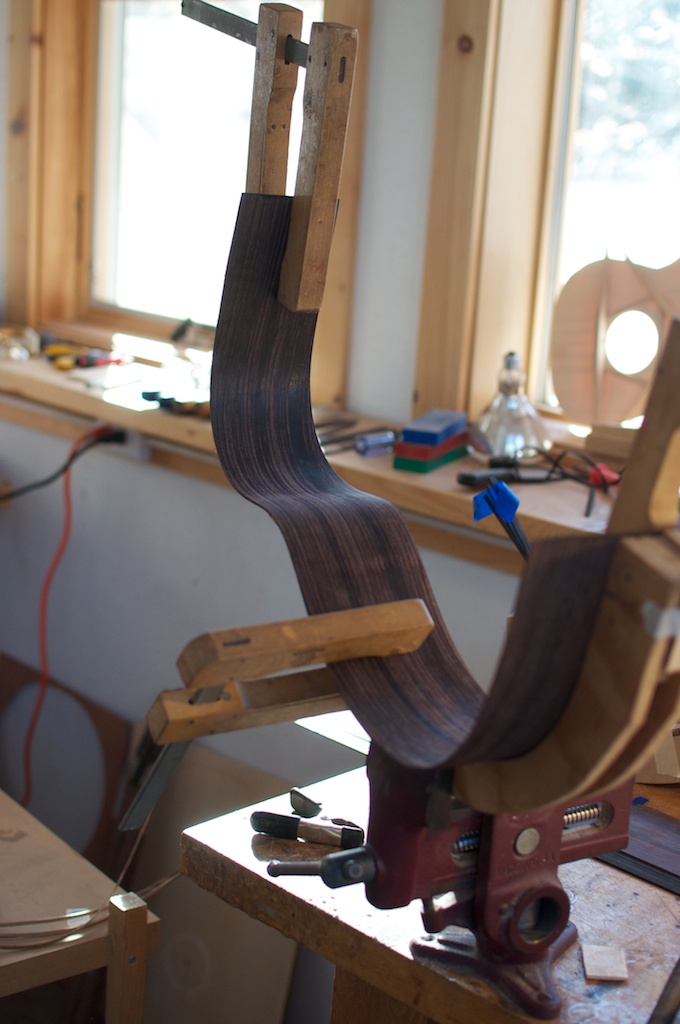
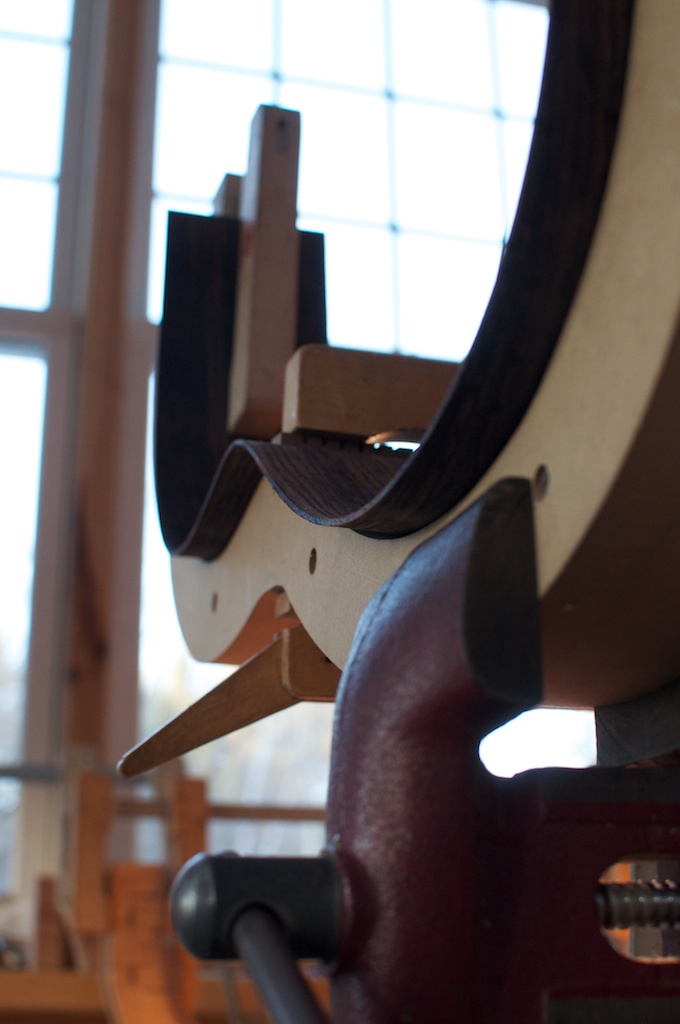
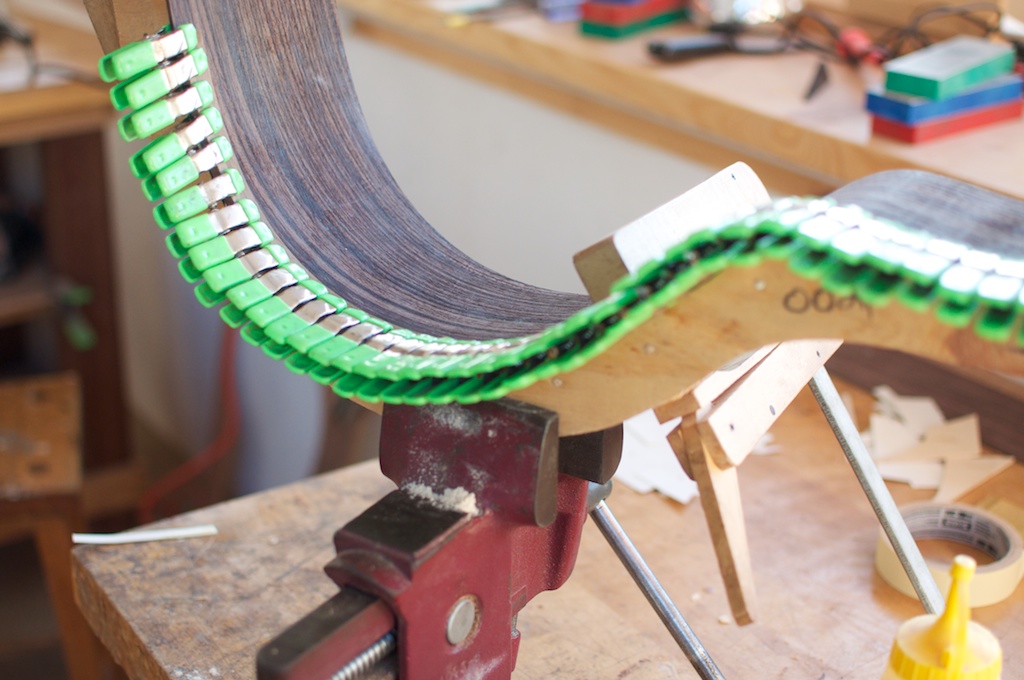
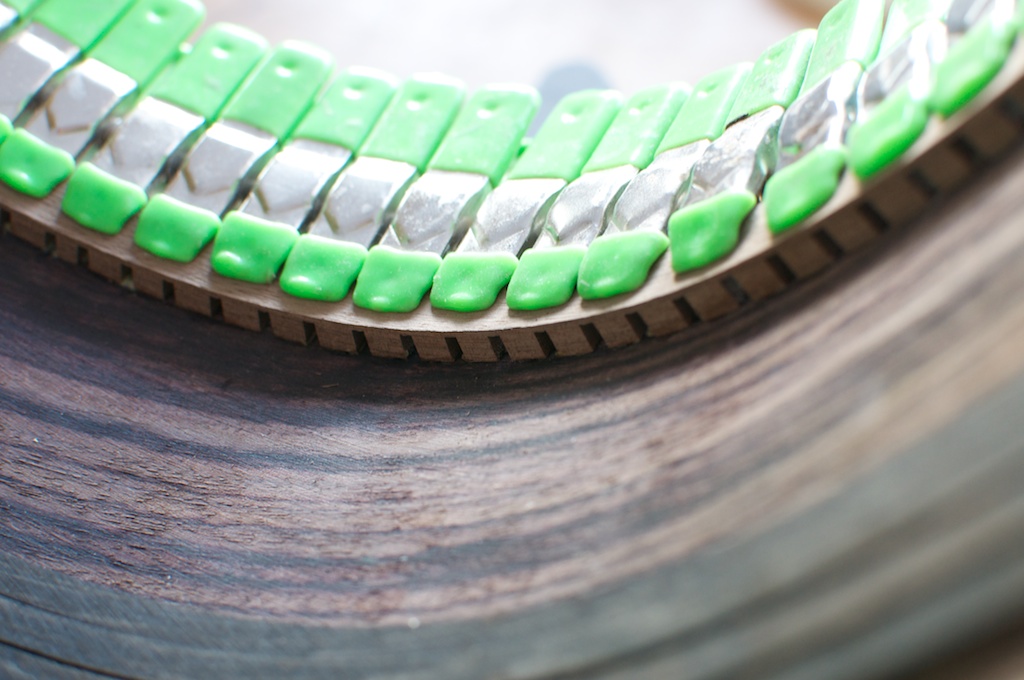

 Sunday, March 27, 2011
Sunday, March 27, 2011